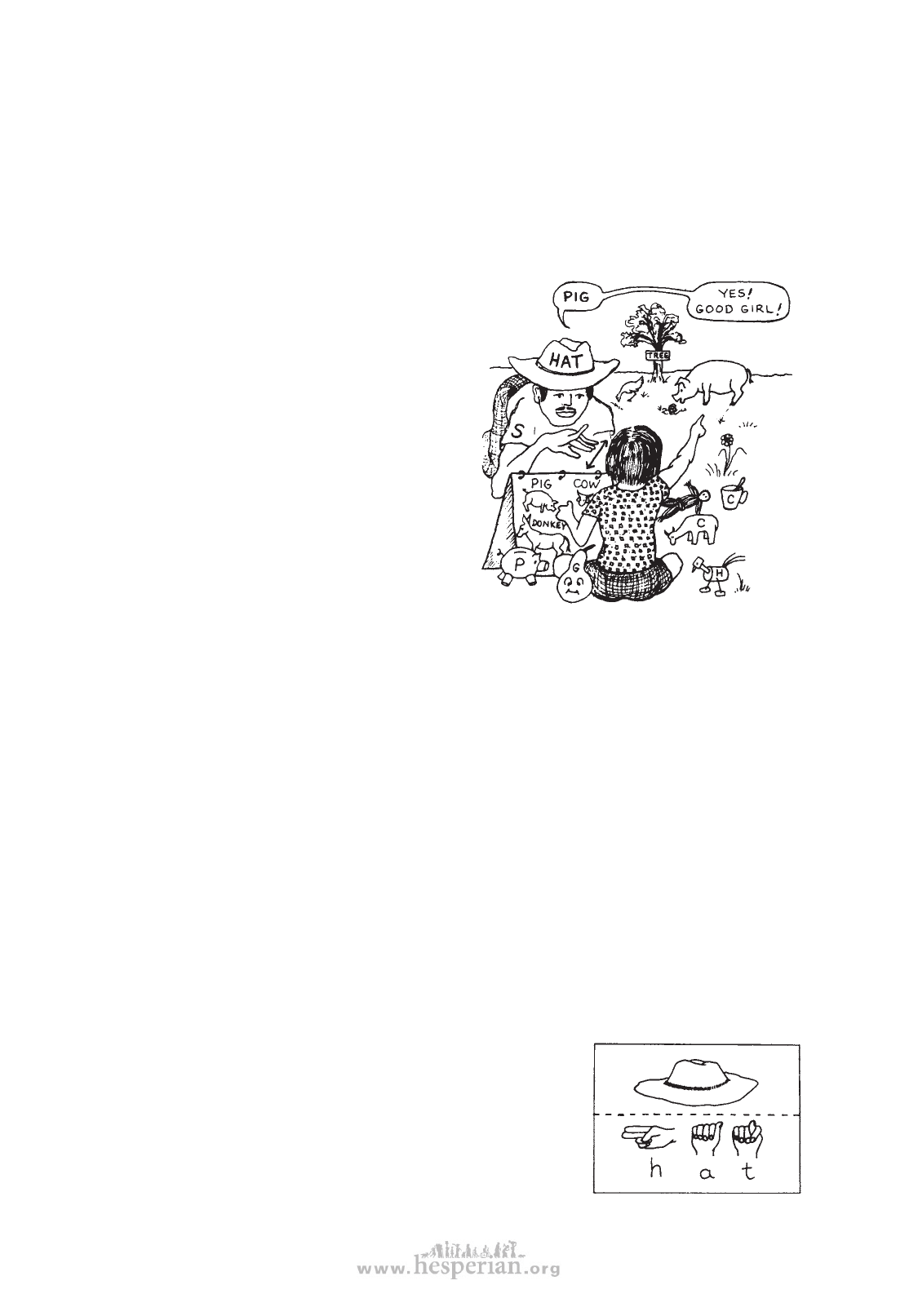
Helping a child learn ‘total communication’
DEAFNESS 265
• The learning place should be well lighted, so that the child can see your hands,
face, and lips.
• Face the child when you speak to her, and be sure she is watching you.
• Talk to her a lot, even if she does not understand. Talk with your hands, face, and
lips, and encourage her to watch them all.
• Speak clear and loud, but do not shout and do not exaggerate the movement of
your mouth and lips. This will help her
learn to recognize normal speech.
• Be patient and repeat things often.
• Be sure to let her know that you are
pleased when she says something or does
something well.
• Encourage her to make whatever sounds
she can. This will help her strengthen her
voice for possible speech.
• Have a lot of toys, pictures, and other
things ready to use in helping her learn
the signs and words for them.
• Make learning to communicate fun.
Include other children in games like
‘Simon says’ that help children use their
eyes, ears, and bodies, and copy each
other (see p. 316).
• Play games that exercise the child’s lips,
tongue, and mouth muscles. In a deaf
child, these muscles can get weak. This not only makes speech more difficult,
but can make the child’s face look dull, or without expression. For activities to
strengthen and control the mouth and lips, see p. 314 and 315.
• Make a list of the words that other children her age use, and that you most want
the child to learn. Include:
• useful words
for learning
and games:
yes, no, thank
you, please,
what, do, don’t,
like, want
• common and
interesting
things:
body parts,
animals,
clothing,
foods
• action words:
come, go, eat,
drink, sleep,
give, put, see,
hear, wash, walk,
run, play, pee
• people: you,
I, he, she, it,
we, they, Mama,
Papa, Juan, Maria,
and other family
members
• description
words: small,
big, up, down,
fat, thin,
good, bad,
hot, cold,
day, night
Start with a short list and gradually make it longer. Use the words often, in daily
activities (feeding, bathing, dressing), and in play. Have the whole family learn
the words on the list and how to make the signs for them. Encourage everyone
to use the words and signs together, not only when they talk with the child, but
when they talk with each other, and for all the things they do in the home. This
way the child will learn about language by playing, watching, listening (as much as
he can), and finally by copying—the way most children learn language.
• As the child gets a little older, help her become familiar
with letters and written words. You can write the first
letter or name of things on different objects around the
home. Or make pictures of things with their names in
big, clear letters. Or make pairs of ‘flash cards’ so the
child can match pictures with words. This will help the
child understand hand signs that are based on letters. It
will prepare him for learning the alphabet in writing and
signs, and for learning to read and write.
disabled village children